Best Motorcycle Earplugs

Easy ways to protect your hearing
Since hearing usually plays second fiddle to vision when riding motorcycles, people sometimes forget how vulnerable their ears are out there on the road. The sound of your helmet traveling through the air at highway speeds is more than enough to damage your hearing over the long term – or even the short term if you’re wearing an open face or half-helmet. While it may go counter to your initial thoughts, wearing earplugs can actually help you hear better. When your ears aren’t completely overwhelmed, you have the ability to hear more sounds.
Until recently, your primary choice for protecting your ears was the faithful foam earplug. The good news is that, when properly inserted, they work better than just about anything else at lessening the intensity of the sound reaching your ears. However, they have some shortcomings. First, if improperly inserted, their effectiveness is radically lessened. Second, many riders feel that the uneven damping of frequencies make sounds muffled and unclear.
Currently, we’re experiencing a Gold Rush of new earplugs directed towards powersports and other noisy activities. These new generation earplugs have actually been tuned for the frequencies they attenuate, making it possible for riders to protect their ears and still be able to carry on a conversation at a stoplight.
What Are The Best Motorcycle Earplugs?
This is really a loaded question, as there are so many variables that come into play, not least of which is the shape of your ears. As such, there is no single answer. Are you trying to block certain frequencies, or do you simply want to block as much noise as possible? Do you want your earplugs to have speakers built-in, or is a simple piece of foam all you need? Ultimately, the best earplugs are the ones that fit your needs and your budget. Read on to find what the best motorcycle earplugs are available for riders.
Why Trust Motorcycle.com?
At Motorcycle.com, our reputation as a trusted authority in the motorcycle world since 1994 is built on our deep expertise and commitment to quality. Our team, composed of seasoned riders and industry experts, brings a wealth of knowledge and experience to every review and product recommendation we offer. We understand that when it comes to motorcycles, parts, and accessories, the right choice can enhance both performance and safety.
Our extensive range of in-depth reviews and performance tests are more than just evaluations; they are insights born from years of hands-on experience and a thorough understanding of what riders truly need. We cover every aspect of motorcycling, from sport bikes and cruisers to adventure bikes and beyond, ensuring that our recommendations cater to every type of rider.
The trust placed in us by over 2 million enthusiasts monthly is a testament to the reliability and accuracy of our advice. Whether it's selecting a new bike, finding the best accessories, or choosing the right gear for your ride, Motorcycle.com is dedicated to providing advice you can trust, backed by decades of expertise in the motorcycling field.
Table of Contents
1. MO Favorite: EarPeace Moto Pro Earplugs
Our former editor-in-chief, Evans Brasfield, always preferred musician's earplugs for road noise protection due to their unique ability to preserve the full frequency response without the muffling effect associated with traditional foam plugs. Following his tests with EarPeace earplugs, however, he made the switch from Etymotic plugs to EarPeace as his go-to noise protection solution. This decision came after noticing that EarPeace earplugs remained securely in place more than 95% of the time, offering similar protection levels.
In his review of the EarPeace Moto Pro earplugs, priced at $40, we highlight several key improvements over the standard EarPeace offerings. These enhancements include an oval shape that better matches the ear canal for a snugger fit, along with updated noise filters that allow for a choice between 19dB and 24dB protection levels. This new shape ensures that the plug/tab remains in the correct orientation, greatly reducing the need for adjustments. In addition, the Moto Pros' tuned acoustic membrane technology is designed to replicate and enhance sound naturally while maintaining audio quality at safe volumes. This technology provides enhanced clarity, especially noticeable in quieter settings, though we found little difference at high speeds.
Evans found the Moto Pros exceptionally comfortable for all-day wear, without the issue of rotation when inserting them. The noise protection strikes an ideal balance between reducing harmful noise and allowing us to hear crucial audio, such as directions from our helmet communicator systems. Despite the higher price point, we believe the improved fit and added features, including a set of three earplugs and a three-piece aluminum holder, more than justify the cost.
2. Runner-up: Eargasm Earplugs
One of our editors, Ryan Adams, has never been a fan of traditional foam earplugs for motorcycle riding, finding them uncomfortable and ineffective. But knowing the critical need for hearing protection at highway speeds, which can cause permanent damage, he sought out alternatives.
Eargasm Earplugs, made from medical-grade silicone, offer a comfortable fit with two sizes of silicone shells for customizable noise attenuation. In his review, Ryan appreciated the significant improvement in comfort and effectiveness compared to foam earplugs. Eargasm claims a 21 dB noise reduction, though the official NRR is 16 dB. These earplugs reduce noise without compromising sound clarity, a major drawback of foam options.
Available in various colors and sizes, Eargasm Earplugs come with a water and dustproof metal carrying case, adding convenience for riders. Ryan found that Eargasm Earplugs significantly improved the riding experience by providing sound deadening without isolation, especially on long rides.
Despite some skepticism about their ability to completely protect against hearing damage in the loudest conditions, Eargasm Earplugs have proven to be a valuable investment for Ryan. Priced around $40 on Amazon, they offer a practical solution for riders looking to protect their hearing without sacrificing comfort or sound quality.
3. Earos One Earplugs
The Earos One acoustic filters (what the manufacturer calls them) stand out in the competitive earplug market, particularly for motorcyclists looking for hearing protection without sacrificing sound quality. Unlike traditional foam plugs that muffle sound, Earos One offers 17dB+ noise protection while preserving the natural frequency response, allowing users to hear their surroundings clearly but at a reduced volume. This is achieved through patented passive filtering technology.
In our review, we found a notable feature of the Earos One is the shape of its outer body, designed to secure the earplugs in place, even when wearing or removing a helmet, addressing a common issue with other earplugs. The product comes with two sizes of flanged ear inserts to fit most users, though we found the need to slightly modify an insert for a perfect fit in one ear. This adjustment improved comfort without compromising the earplug's effectiveness or security.
Overall, the Earos One earplugs provide excellent noise attenuation, a secure and comfortable fit, and ease of removal, making them a solid choice for motorcyclists. They are available for $40, which includes one set of Earos and two sets of inserts, catering to approximately 90% of users.
Motorcycles and Hearing Loss
In terms of rider education and injury prevention, a great deal of attention is paid to motorcycle safety by the government, motorcycle industry, and media. However, the subject of hearing loss among motorcyclists is rarely discussed. Yes, riders sometimes make passing remarks about ear fatigue after a long day in the saddle, and recent years have (in my subjective opinion) shown an increase in earplug use among riders. Still, the subject and the use of actual, provable scientific numbers have been relatively overlooked when compared to safety items like body armor and helmets.
Roughly one out of every 10 Americans suffer from hearing loss that affects their ability to understand normal conversation. The most common kind of hearing loss is the exposure to excessive noise, and the simple act of riding a motorcycle puts riders at risk for becoming part of those statistics. The wind noise at highway speeds can expose motorcyclists to sound levels in excess of 100 dB – that’s the equivalent of using a chain saw or standing in the middle of a dance club. Helmetless riders can experience noise 10 times greater than that, resulting in potential hearing loss in as little as 30 minutes. Hopefully your rides last longer than a half-hour.
According to the National Institute on Deafness and Other Communication Disorders, approximately 15 percent (26 million) of Americans between the ages of 20 and 69 have high frequency hearing loss due to exposure to loud sounds or noise at work or in leisure activities.
When we consider hearing loss, we need to keep two things in mind. First, noise-induced hearing loss (NIHL) is preventable. Second, NIHL is permanent. Once that hearing is gone, it’s gone forever.
NIHL in the workplace has been well documented, and OSHA has made rules regarding what is an acceptable duration of exposure to various levels of noise. Using these standards as a baseline, riders can learn what the relative intensity of noise they’re facing when they ride and make educated decisions on how to minimize their long-term risk for hearing loss. Read the rest of the article here.
Motorcycle Earplugs FAQs
Should I wear earplugs on my motorcycle?
Ask a room full of motorcyclists this question and half the room will respond… “What? Speak up. I can’t hear you.” In our opinion, you should listen to the other half of the room. As mentioned at the top of this page, just the wind noise can hurt your ears if sustained long enough. And you don’t need to be traveling fast, either. There’s a misconception that wearing earplugs means you won’t be able to hear a thing. While it’s true it might be harder to hear someone in their car talking to you at a stoplight, you definitely don’t lose your sense of hearing, and you often are able to hear your own motorcycle better. The thing about hearing loss is that it doesn’t occur overnight. Years of riding without earplugs will inevitably cause damage, and though you may not go completely deaf, your ears will definitely not be as sharp as they could be.
Is it Legal to Wear Earplugs While Riding a Motorcycle?
Before investing in some motorcycle earplugs, you may want to check whether it’s legal in your state to wear them when operating a motorcycle. Generally speaking, most states don’t have any laws prohibiting earplugs, therefore making them legal (or more accurately, “not illegal.”) According to the American Motorcyclist Association, only California, Ohio and Maryland have restrictions on riding with earplugs.
Ohio has an outright ban on wearing earplugs in both ears when operating any vehicle, though there is legislation currently being reviewed by a state senate committee that would permit motorcyclists to wear ear protection. In California, earplugs are allowed so long as they do not inhibit the rider from hearing horns from other vehicles or sirens from emergency vehicles. The law in Maryland is similar, but further restricts riders to using just custom earplugs.
Are custom earplugs better?
Not necessarily. To get into the reasons why, it’s easiest to create a pros and cons list. The Pros of going custom are self explanatory, primarily the fact you have a set of earplugs you know will fit your ears. Also, some companies can integrate custom speakers into the mold, turning your custom earplugs into a set of custom earbuds, to attach to your phone, GPS, or other device. Alternatively, there are cons to going custom. First of which is the cost. Going with custom earplugs is expensive (relatively speaking) and you may not need them if off-the-shelf plugs fit in your ear canal just fine. Being a one-of-one entity, if you lose your custom earplugs, you’re screwed. Granted, silicone earplugs are also a financial burden if they’re lost, but the ding on your wallet isn’t nearly as bad as custom. Compared to generic foam jobs, however, the cost delta is huge. Another issue with custom earplugs that affects a small number of people is it sealing so well against your ear that it disrupts your equilibrium. We would have never considered this ourselves if it didn’t happen to one of our own MO staff members. Obviously, keeping your balance on a motorcycle is important.
Recent Updates
- March 1, 2024: We've overhauled this entire article to reduce the number of recommendations to three for a better shopping experience. After more thorough evaluation and testing, these are currently the top three picks from our staff editors.
- August 17, 2022: Changed links for Pinlock and Hearos ear plugs. Added Vibes, Oxford, and NoNoise ear plugs.
- March 1, 2022: Removed out of stock items. Added hearing loss information.
- July 15, 2021: Added Loop Experience earplugs.
Related Reading
We are committed to finding, researching, and recommending the best products. We earn commissions from purchases you make using the retail links in our product reviews. Learn more about how this works.
Become a Motorcycle.com insider. Get the latest motorcycle news first by subscribing to our newsletter here.

Like most of the best happenings in his life, Evans stumbled into his motojournalism career. While on his way to a planned life in academia, he applied for a job at a motorcycle magazine, thinking he’d get the opportunity to write some freelance articles. Instead, he was offered a full-time job in which he discovered he could actually get paid to ride other people’s motorcycles – and he’s never looked back. Over the 25 years he’s been in the motorcycle industry, Evans has written two books, 101 Sportbike Performance Projects and How to Modify Your Metric Cruiser, and has ridden just about every production motorcycle manufactured. Evans has a deep love of motorcycles and believes they are a force for good in the world.
More by Evans Brasfield



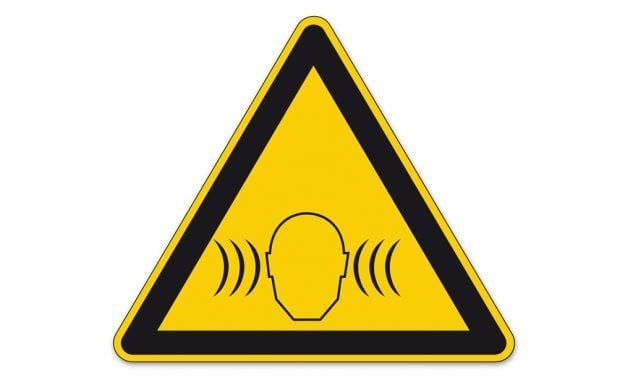
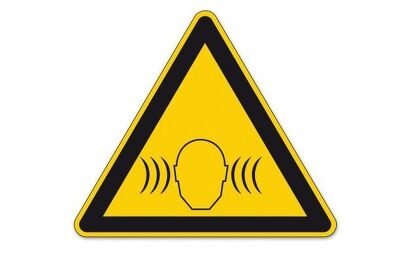



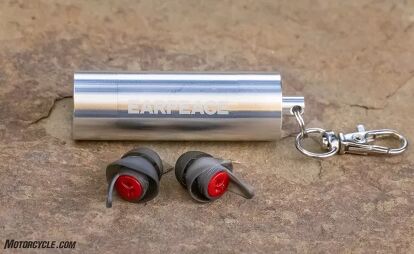




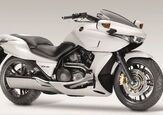

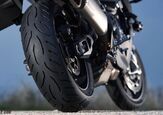
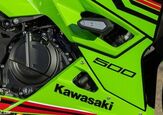
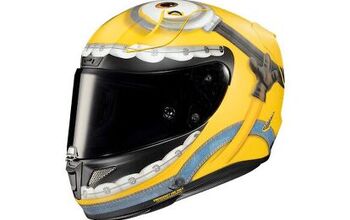





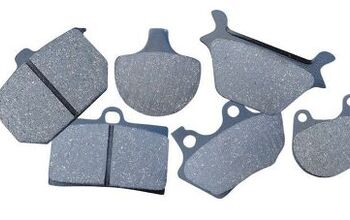




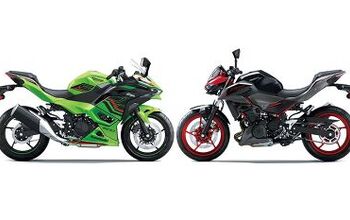




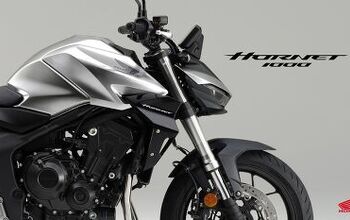

Comments
Join the conversation
Like you I really like the Earpeace earplugs; I've been using them for years. BUT, they have one glaring deficiency, which is their planned failure. The small tabs that are used to pull them out of your ear fail. Even though the earplug itself is still in fine condition, the little tabs wear and then finally tear off. As someone who rides pretty much every single day of the year (SoCal), I put them in and take them out, a lot. I've even asked them to perhaps make the tabs a little thicker or wider to be sturdy, but nope. So, if you don't mind having to replace them each time the tabs prematurely tear off, even though the plugs are still fine, go for it. Right now I have a pair where one of the tabs has torn off (forcing me to dig the plug out each time) and the other one I'm babying for the past two weeks now because it's hanging on by a thread.
I love them, but that's an irritating flaw, when the actual plugs still have plenty of useful life.
Bear in mind that dBs are log scale so the best foam ones with ~33-35 dB rating are SIGNIFICANTLY more noise-reducing than even the highest-rated permanent types featured in this article.